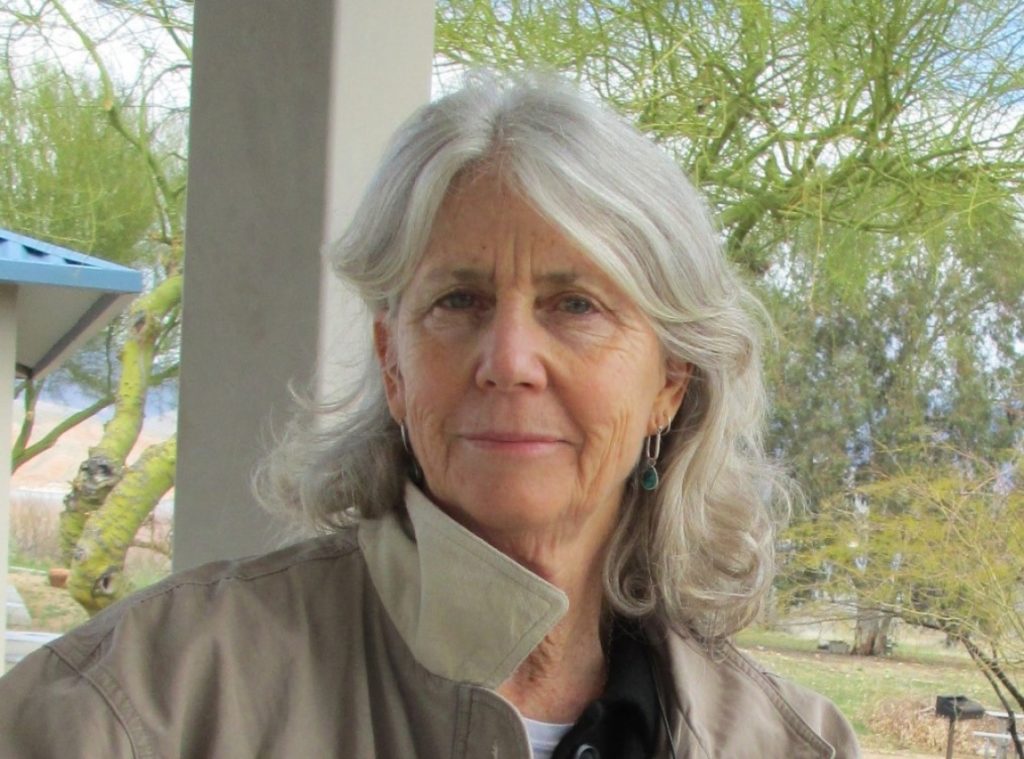During Woman’s History Month, University of Arizona News is spotlighting some of the many women on campus who are working on climate change-related issues in various disciplines.
In a recent commentary published in Nature, world-renowned climate scientist and UArizona Regents Professor Diana Liverman and her co-authors write that climate change will have disproportional impacts on women, who in many societies have the responsibility to provide food, water and child care but are more likely than men to lack access to land, insurance and disaster relief. Liverman and her co-authors also write that women play crucial roles in climate change research, response and adaptation.
UArizona has a long legacy of women researching climate change, and today there are outstanding women researchers working on climate-related issues in nearly every college on campus, from early career scientists to Regents and Distinguished Professors.
“I’m so proud of the number of amazing women working on climate issues at the University of Arizona,” Liverman said. “We cover a wide range of expertise – from climate science and communication to policy and art. We are making a difference in what we know and what we can do from the local to global.”
>> Border Lab Fellowship: Jacqueline Arias, Mariel Miranda
>> University Fellows: Arts students join 2021-2022 cohort
>> Transforming Education: Anupam Singh’s Socially Engaged Art

Ellen McMahon: Addressing climate change through the arts
Ellen McMahon came to the University of Arizona in 1983 with an undergraduate degree in biology to pursue a master’s degree in scientific illustration. She now holds a split position as a professor in the School of Art and as inaugural associate dean for research in the College of Fine Arts.
Q: What is the focus of your climate research?
A: As an artist, I use color, form, design, space, scale, site, image and sometimes smell and sound to give form to my experience. When I’m on the right track, what I make surprises me, revealing things that were outside my conscious awareness. Once my work goes into a public space, ideally it resonates with the experience of others and provokes thought and conversation. For the last several years, my focus has been on the potential for art to make people more receptive and responsive to the facts of climate change. This interest has led me to initiate several interdisciplinary projects. The first one, which focused on regional water, resulted in the publication “Ground|Water: The Art, Design and Science of a Dry River” and introduced me to several University of Arizona climate scientists including Diana Liverman and Gregg Garfin. For a more recent project, I repurposed the hemispherical photographs of forest canopies used as data by University of Arizona professor in the School of Natural Resources and the Environment David Breshears and his team in their research on drought-induced tree die-off. The final 8-foot-square piece called “Change Over Time,” which tells the story of the dying forests of the southwestern United States in the language of tree rings – change over time recorded in concentric circles radiating from the center. It is currently in the exhibition “Trees Stir in their Leaves” at the Center for Creative Photography on campus.
Q: What originally got you excited or worried about climate issues and where do you think your work can make a difference?
A: About 20 years ago, increasingly alarmed by the findings of climate scientists, I began providing opportunities for my students to contribute their creative thinking and art and design skills to environmental efforts. We took weekend field trips to Puerto Peñasco, Mexico, to work with the Intercultural Center for the Study of Deserts and Oceans. At the environmental field station, with no internet or phone service, we slept under the stars, learned about the biodiverse coastal ecosystem firsthand and helped the center with a number of projects at the intersection of social justice and environmental conservation. I have since developed a course called Art, Design and Environment in which students work on art and design projects with organizations such as Tucson Village Farm, Arizona Project WET, Native Seed Search and Tucson Audubon Society. Motivating people to work together to mitigate and adapt to emergent environmental conditions will require a cultural shift only possible through a well-considered combination of artistic and scientific means. Through my creative research and teaching, I have seen how art/science collaborations can raise awareness about and catalyze a public response to environmental risks and help us to imagine and work together toward more sustainable futures.
Q: What’s one thing you want everyone to understand about climate change?
A: Information about climate change doesn’t become climate action on any scale – from backyard composting to global policy – without human buy-in. Unfortunately, we are creatures more compelled by feelings than by rational thought, who frequently act against our own best interests. By engaging our senses, emotions, values and beliefs, art can help us replace the false narratives that have led to our current crisis with new perspectives and stories about our environmental roles and responsibilities. Since all knowledge is generated through the subjective process of interpreting data and information, all climate research projects will benefit by including researchers in the arts and humanities at the early stages of conception and research question formation.
Q: What advice do you have for young women or girls who may be interested in a career related to climate research or policy?
A: My advice to all young people is to find a balance between engaging with the challenges of the outer world and cultivating a rich inner life. Pay attention to your first-person perspective, which is always there and always felt and experienced, as well as your social bonds and your interconnections to everything. Develop your particularities and passions carefully so they will lead you to the place in the world where you can do the most good.
Originally published on the University Communications website on March 31, 2022. Republished with permission. Read the complete story here.
